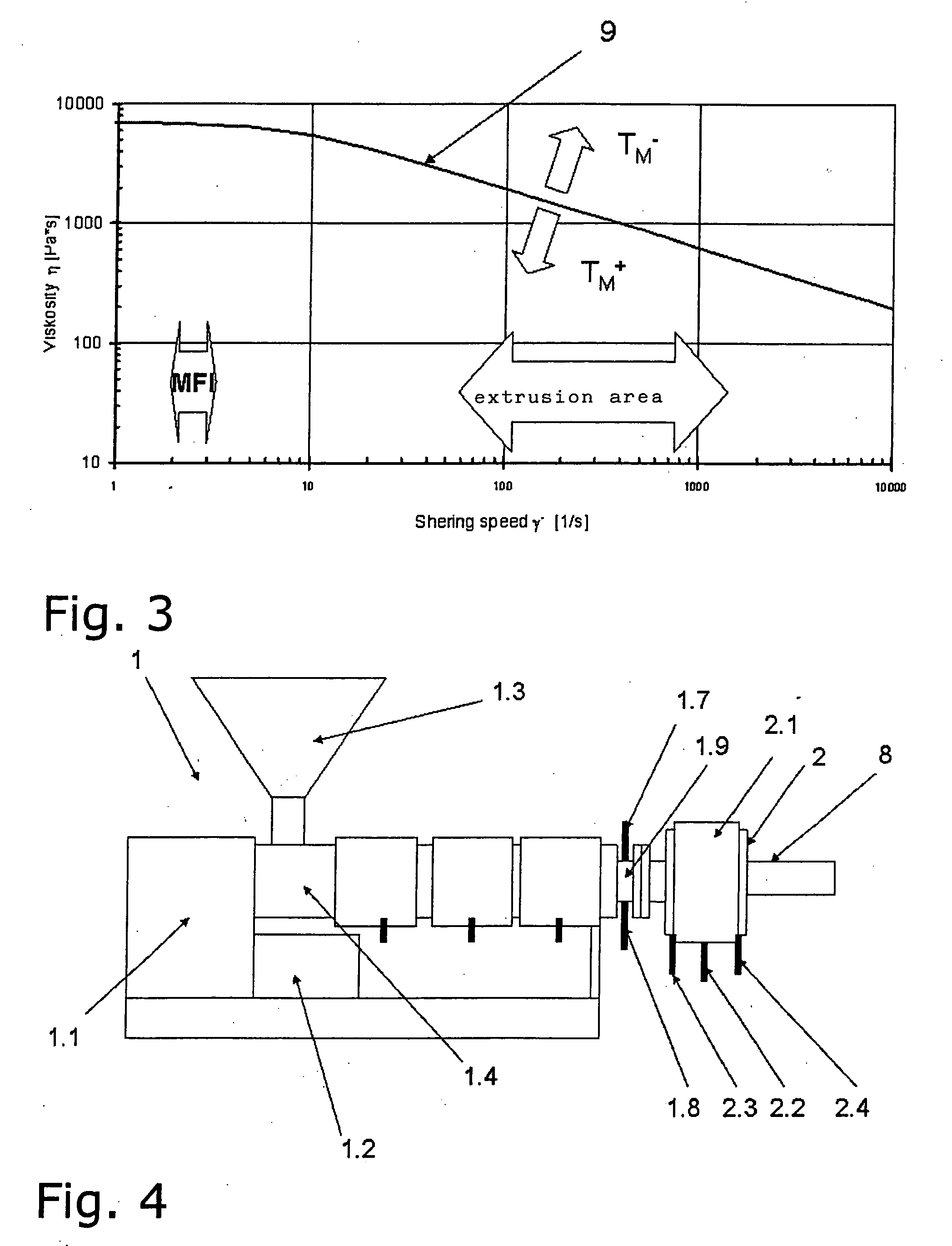Method for producing profiles made of thermoplastic material
a thermoplastic material and profile technology, applied in the direction of auxillary shaping apparatus, manufacturing tools, ceramic shaping apparatus, etc., can solve the problems of unsuitability, rheological properties, and the inability to use the system in the case of pvc processing, so as to reduce the speed of screw speed, increase mass temperature, and precise determination of pressure consumption
- Summary
- Abstract
- Description
- Claims
- Application Information
AI Technical Summary
Benefits of technology
Problems solved by technology
Method used
Image
Examples
Embodiment Construction
:
[0045]FIG. 1 shows an extrusion plant consisting of an extruder 1, the extrusion die 2, the dry calibrating tool 3, the water-bath or vacuum-tank calibration 4, the vacuum calibrating table 5, the profile caterpillar pull-off 6, the apparatus 7 for cutting the profile to length, and the produced profile 8.
[0046]FIG. 2 shows the part of an extrusion plant which is the most important one with respect to the process technique and consists of the extruder 1 with the gearing 1.1, the drive motor 1.2, the feeding means 1.3 for the material (funnel), the extruder cylinder 1.4 (with extruder screws not shown in closer detail), the heating devices 1.5 (configured as a heating and cooling body), the temperature sensors 1.6 for determining the extruder cylinder temperature, the temperature sensor 1.7 for determining the mass temperature of the melt in the adapter 1.9, the pressure sensor 1.8 for determining the melt pressure in the adapter 1.9 and the extrusion die 2, comprising the heating ...
PUM
| Property | Measurement | Unit |
|---|---|---|
| pressure | aaaaa | aaaaa |
| mass flow | aaaaa | aaaaa |
| speed | aaaaa | aaaaa |
Abstract
Description
Claims
Application Information
 Login to View More
Login to View More - R&D
- Intellectual Property
- Life Sciences
- Materials
- Tech Scout
- Unparalleled Data Quality
- Higher Quality Content
- 60% Fewer Hallucinations
Browse by: Latest US Patents, China's latest patents, Technical Efficacy Thesaurus, Application Domain, Technology Topic, Popular Technical Reports.
© 2025 PatSnap. All rights reserved.Legal|Privacy policy|Modern Slavery Act Transparency Statement|Sitemap|About US| Contact US: help@patsnap.com



